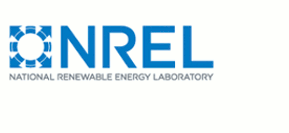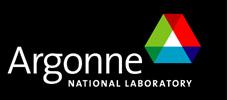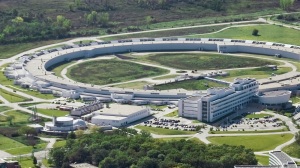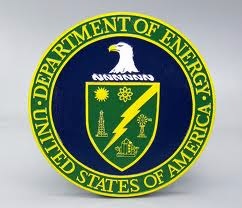From The DOE’s NREL- The National Renewable Energy Laboratories
And
The DOE’s Argonne National Laboratory
6.20.24
Wayne Hicks
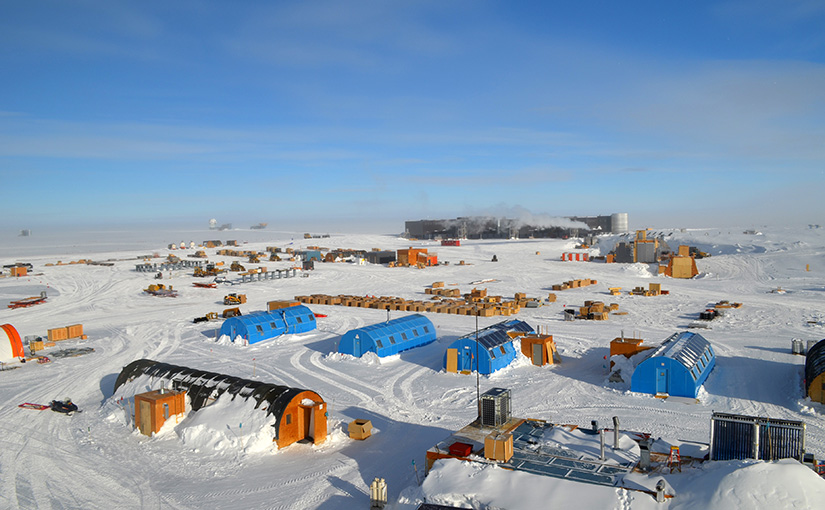
The backyard of Amundsen-Scott South Pole Station contains work-center buildings and cargo-staging areas. The main station is the large gray building in the distance. To the left of center in the distance, several of the scientific telescope buildings can be seen. Photo by Ian McEwen, National Science Foundation
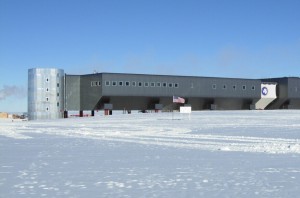
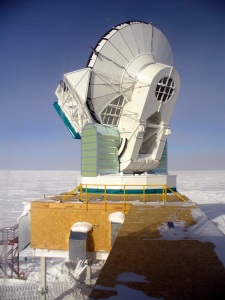
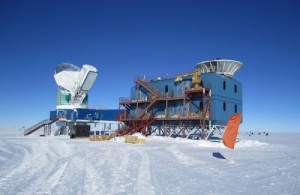
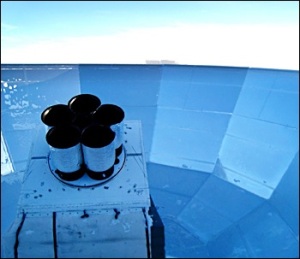
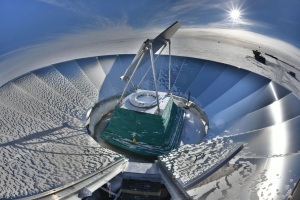
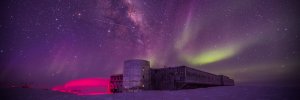
An opportunity exists at the bottom of the world to show the planet the importance and reliability of renewable energy.
Researchers at the DOE’s National Renewable Energy Laboratory (NREL) and the DOE’s Argonne National Laboratory looked at how a combination of solar modules, wind turbines, and battery storage could provide a cost-effective way to expand research capabilities at the South Pole while significantly reducing costs. The idea to shift away from diesel fuel specially formulated to withstand the extreme cold comes as scientists look toward future experiments.
“Power is just a very limited resource at the South Pole,” said Amy Bender, a physicist at Argonne who is responsible for the infrastructure of existing South Pole Telescope systems.
From research to life in the Antarctica research stations, diesel fuel provides almost all of the necessary power. The fuel is shipped to Antarctica and either flown or trucked to the South Pole, an expensive proposition that could be greatly reduced using wind and solar. Bender said the National Science Foundation (NSF), which operates the research stations on the continent, has “brilliantly” met the challenge of supplying fuel, but it remains a challenge.
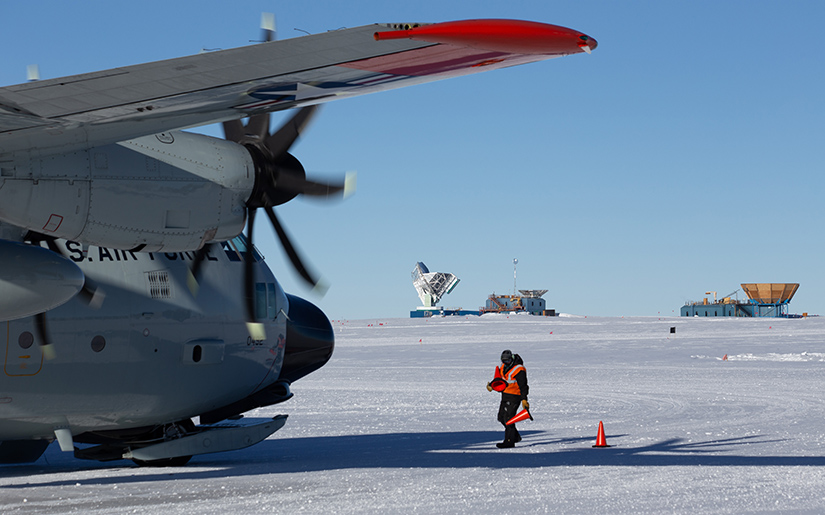
At the South Pole Station, the Dark Sector Laboratory and the Martin A. Pomerantz Observatory are visible in the distance amidst flight operations for the LC-130 cargo plane. Photo by Kevin Zagorski, National Science Foundation
Technology Would Work in Extreme Conditions
Bender, who has spent what amounts to a year at the South Pole—broken up over six summers—coauthored a recently published paper examining the economics and feasibility of using renewable energy there. There is a history of examining renewables there, with NSF publishing the results of a small-scale test of solar panels in 2000 and NREL following up five years later with an examination of whether wind turbines would work. Both technologies were able to successfully operate in the extreme conditions there. The NSF has released a draft master plan for the South Pole Station that recommends conducting on-site testing of current renewable energy technologies to determine their suitability for the location.
“The South Pole is one of the most extreme places on the planet,” said Ian Baring-Gould, the Wind Technology Deployment manager at NREL and who coauthored the research publication. “From a technology perspective, we’re fairly confident based on the research that we’ve done thus far that the turbines can operate down to negative 70 degrees. There’s nothing keeping us from doing that. Obviously, people don’t do it on a regular basis because you don’t need to. The same thing is true for solar. Solar modules typically don’t operate down to negative 70 because they don’t need to.”
The government of New Zealand deployed three wind turbines in 2009, with the electricity generated by them supplying power to that country’s Scott Base and the United States’ McMurdo Station. McMurdo is about 850 miles north of the South Pole and is the landing location for all the fuel that eventually goes to the South Pole.
With the technologies proven in sub-subzero weather, the next test dealt with economics. The cost of diesel fuel “is a whole lot higher now than it was back in that 2005 study,” Baring-Gould said.
The new paper calculates the levelized cost of energy for powering the South Pole amounts to $4.09 a kilowatt-hour (kWh) for diesel fuel, compared to 33 cents for wind and 23 cents for solar.
Using the NREL-developed Renewable Energy Integration and Optimization (REopt) tool, which calculates the economic viability of a renewable project, the researchers determined the least-cost scenario to supply a consistent 170 kW of power for new research equipment at the South Pole involves a hybrid system involving six wind turbines, 180 kilowatts of solar, and 3.4 megawatt-hours of battery energy storage. That combination reduces the amount of diesel power consumption by 96%, reducing the need to transport fuel to the South Pole and the subsequent environmental damage of burning that fuel in such a pristine location. Over the course of 15 years, the savings from using less diesel would amount to $57 million. The $10 million investment required to install the renewable technologies could be recouped in about two years, according to the research.
“It could be a little more than that. It could be a little less, but it really pays off quickly in terms of the other option of burning more diesel fuel to meet that power demand,” said Nate Blair, a coauthor of the paper and a group manager in the Accelerated Deployment and Decision Support Center at NREL. As the research stations expand, he said, “it’s not clear that the current system can handle a lot of additional loads.”
One such research project is the South Pole Telescope [above], a microwave telescope at the South Pole designed to measure the cosmic microwave background [CMB], or the light that first winked into existence billions of years ago.
“What we are trying to study is some of the earliest light in the universe,” said Bender, a member of Argonne’s Experimental Cosmology group who holds a doctorate in astrophysics. “It is light that was released about 380,000 years after the Big Bang, so it’s essentially 13 billion years old.”
______________________________
Cosmic Microwave Background [CMB] study history









______________________________
What cannot be seen by the naked eye, or even by a less-powerful telescope, reveals a wavelength of light that measures only about a millimeter. The water vapor in Earth’s atmosphere interferes with observing these tiny wavelengths, making the placement of the telescopes critically important.
“At the South Pole, it’s so incredibly cold that the water has actually frozen into ice crystals, and ice crystals don’t obscure the view. We can see right through them,” Bender said. “That’s why we’re at the South Pole. It’s really basically the best site on the entire Earth to do this kind of science.”
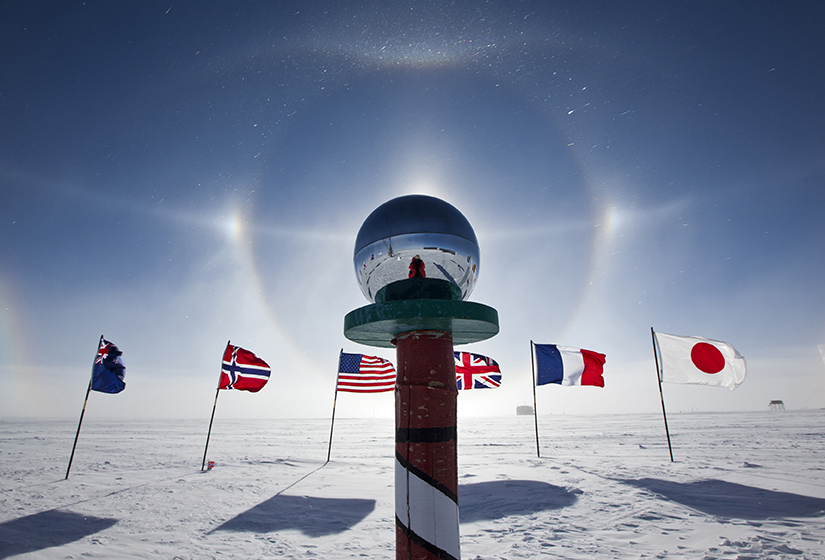
The Ceremonial Pole at the South Pole is surrounded by the national flags of the countries that were the first to sign the Antarctic Treaty. Photo by Deven Stross, National Science Foundation
“Nothing Is Standing in the Way”
The analysis showing renewables will work at the South Pole is the first step.
“There’s nothing really complicated here from a technology standpoint about why we cannot, or we should not, do this,” said Baring-Gould, who has visited the South Pole previously, supporting NSF in understanding how to use renewable energy to reduce fossil-fuel-generated power. The design and placement of the renewables will require additional work. The solar panels must be designed to avoid becoming buried in snowdrifts, for example. The foundation for the wind turbines will be anchored in ice, which he said has not been attempted before at this scale. “We can do this. That’s not the problem. But we do need to do that homework to make sure that we do it right and we’re successful at it. It’s not a slam dunk, but there’s nothing that is standing in the way of doing this.”
In addition to the weather, the location of the South Pole demands a different approach for the use of renewables. The sun, for example, only illuminates the region for six months of the year and during that time reaches a maximum elevation of 23.5 degrees above the horizon, the researchers pointed out. They proposed a solar array that places the modules vertically to minimize accumulated snow and with the panels arranged into four subarrays oriented to the points of the compass to capture the maximum amount of energy from the sun circling overhead.
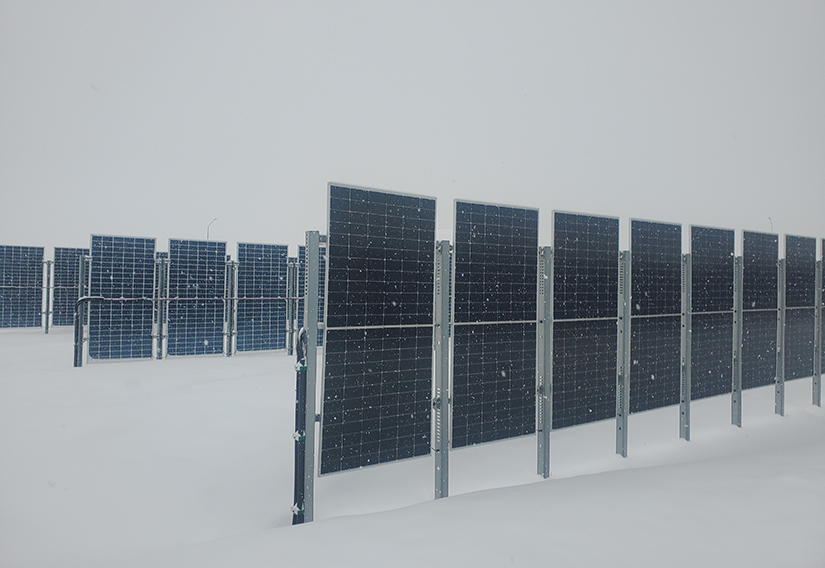
Solar panels set up vertically in Sweden by Sunna Group use an arrangement that is also expected to be useful for generating power at the South Pole. Photo by Silvana Ovaitt, NREL
Additional work must be done to solve a possible problem with the deployment of wind turbines. The turbines have the potential to cause electromagnetic interference to some experiments at Amundsen-Scott South Pole Station. The researchers said a detailed assessment must be done and a mitigation plan developed.
Baring-Gould, who describes the South Pole as an “amazingly beautiful place,” said the new study “reaffirms really clearly that any place on the planet where you’re running diesel fuel, you should be thinking about renewables as a real viable option. It won’t always be the case that it is, but you really should look at it.”
See the full article here.
Comments are invited and will be appreciated, especially if the reader finds any errors which I can correct.
five-ways-keep-your-child-safe-school-shootings
Please help promote STEM in your local schools.
The DOE’s Argonne National Laboratory seeks solutions to pressing national problems in science and technology. The nation’s first national laboratory, Argonne conducts leading-edge basic and applied scientific research in virtually every scientific discipline. Argonne researchers work closely with researchers from hundreds of companies, universities, and federal, state and municipal agencies to help them solve their is a science and engineering research national laboratory operated by UChicago Argonne LLC for the United States Department of Energy. The facility is located in Lemont, Illinois, outside of Chicago, and is the largest national laboratory by size and scope in the Midwest.
Argonne had its beginnings in the Metallurgical Laboratory of the University of Chicago, formed in part to carry out Enrico Fermi’s work on nuclear reactors for the Manhattan Project during World War II. After the war, it was designated as the first national laboratory in the United States on July 1, 1946. In the post-war era the lab focused primarily on non-weapon related nuclear physics, designing and building the first power-producing nuclear reactors, helping design the reactors used by the United States’ nuclear navy, and a wide variety of similar projects. In 1994, the lab’s nuclear mission ended, and today it maintains a broad portfolio in basic science research, energy storage and renewable energy, environmental sustainability, supercomputing, and national security.
UChicago Argonne, LLC, the operator of the laboratory, “brings together the expertise of the University of Chicago (the sole member of the LLC) with Jacobs Engineering Group Inc.” Argonne is a part of the expanding Illinois Technology and Research Corridor. Argonne formerly ran a smaller facility called Argonne National Laboratory-West (or simply Argonne-West) in Idaho next to the Idaho National Engineering and Environmental Laboratory. In 2005, the two Idaho-based laboratories merged to become the DOE’s Idaho National Laboratory.
What would become Argonne began in 1942 as the Metallurgical Laboratory at the University of Chicago, which had become part of the Manhattan Project. The Met Lab built Chicago Pile-1, the world’s first nuclear reactor, under the stands of the University of Chicago sports stadium. Considered unsafe, in 1943, CP-1 was reconstructed as CP-2, in what is today known as Red Gate Woods but was then the Argonne Forest of the Cook County Forest Preserve District near Palos Hills. The lab was named after the surrounding forest, which in turn was named after the Forest of Argonne in France where U.S. troops fought in World War I. Fermi’s pile was originally going to be constructed in the Argonne Forest, and construction plans were set in motion, but a labor dispute brought the project to a halt. Since speed was paramount, the project was moved to the squash court under Stagg Field, the football stadium on the campus of the University of Chicago. Fermi told them that he was sure of his calculations, which said that it would not lead to a runaway reaction, which would have contaminated the city.
Other activities were added to Argonne over the next five years. On July 1, 1946, the “Metallurgical Laboratory” was formally re-chartered as Argonne National Laboratory for “cooperative research in nucleonics.” At the request of the U.S. Atomic Energy Commission, it began developing nuclear reactors for the nation’s peaceful nuclear energy program. In the late 1940s and early 1950s, the laboratory moved to a larger location in unincorporated DuPage County, Illinois and established a remote location in Idaho, called “Argonne-West,” to conduct further nuclear research.
In quick succession, the laboratory designed and built Chicago Pile 3 (1944), the world’s first heavy-water moderated reactor, and the Experimental Breeder Reactor I (Chicago Pile 4), built-in Idaho, which lit a string of four light bulbs with the world’s first nuclear-generated electricity in 1951. A complete list of the reactors designed and, in most cases, built and operated by Argonne can be viewed in the, Reactors Designed by Argonne page. The knowledge gained from the Argonne experiments conducted with these reactors 1) formed the foundation for the designs of most of the commercial reactors currently used throughout the world for electric power generation and 2) inform the current evolving designs of liquid-metal reactors for future commercial power stations.
Conducting classified research, the laboratory was heavily secured; all employees and visitors needed badges to pass a checkpoint, many of the buildings were classified, and the laboratory itself was fenced and guarded. Such alluring secrecy drew visitors both authorized—including King Leopold III of Belgium and Queen Frederica of Greece—and unauthorized. Shortly past 1 a.m. on February 6, 1951, Argonne guards discovered reporter Paul Harvey near the 10-foot (3.0 m) perimeter fence, his coat tangled in the barbed wire. Searching his car, guards found a previously prepared four-page broadcast detailing the saga of his unauthorized entrance into a classified “hot zone”. He was brought before a federal grand jury on charges of conspiracy to obtain information on national security and transmit it to the public, but was not indicted.
Not all nuclear technology went into developing reactors, however. While designing a scanner for reactor fuel elements in 1957, Argonne physicist William Nelson Beck put his own arm inside the scanner and obtained one of the first ultrasound images of the human body. Remote manipulators designed to handle radioactive materials laid the groundwork for more complex machines used to clean up contaminated areas, sealed laboratories or caves. In 1964, the “Janus” reactor opened to study the effects of neutron radiation on biological life, providing research for guidelines on safe exposure levels for workers at power plants, laboratories and hospitals. Scientists at Argonne pioneered a technique to analyze the moon’s surface using alpha radiation, which launched aboard the Surveyor 5 in 1967 and later analyzed lunar samples from the Apollo 11 mission.
In addition to nuclear work, the laboratory maintained a strong presence in the basic research of physics and chemistry. In 1955, Argonne chemists co-discovered the elements einsteinium and fermium, elements 99 and 100 in the periodic table. In 1962, laboratory chemists produced the first compound of the inert noble gas xenon, opening up a new field of chemical bonding research. In 1963, they discovered the hydrated electron.
High-energy physics made a leap forward when Argonne was chosen as the site of the 12.5 GeV Zero Gradient Synchrotron, a proton accelerator that opened in 1963. A bubble chamber allowed scientists to track the motions of subatomic particles as they zipped through the chamber; in 1970, they observed the neutrino in a hydrogen bubble chamber for the first time.
Meanwhile, the laboratory was also helping to design the reactor for the world’s first nuclear-powered submarine, the U.S.S. Nautilus, which steamed for more than 513,550 nautical miles (951,090 km). The next nuclear reactor model was Experimental Boiling Water Reactor, the forerunner of many modern nuclear plants, and Experimental Breeder Reactor II (EBR-II), which was sodium-cooled, and included a fuel recycling facility. EBR-II was later modified to test other reactor designs, including a fast-neutron reactor and, in 1982, the Integral Fast Reactor concept—a revolutionary design that reprocessed its own fuel, reduced its atomic waste and withstood safety tests of the same failures that triggered the Chernobyl and Three Mile Island disasters. In 1994, however, the U.S. Congress terminated funding for the bulk of Argonne’s nuclear programs.
Argonne moved to specialize in other areas, while capitalizing on its experience in physics, chemical sciences and metallurgy. In 1987, the laboratory was the first to successfully demonstrate a pioneering technique called plasma wakefield acceleration, which accelerates particles in much shorter distances than conventional accelerators. It also cultivated a strong battery research program.
Following a major push by then-director Alan Schriesheim, the laboratory was chosen as the site of the Advanced Photon Source, a major X-ray facility which was completed in 1995 and produced the brightest X-rays in the world at the time of its construction.
On 19 March 2019, it was reported in the Chicago Tribune that the laboratory was constructing the world’s most powerful supercomputer. Costing $500 million it will have the processing power of 1 quintillion flops. Applications will include the analysis of stars and improvements in the power grid.
With employees from more than 60 nations, Argonne is managed by UChicago Argonne, LLC for the U.S. Department of Energy’s Office of Science. For more visit www.anl.gov.
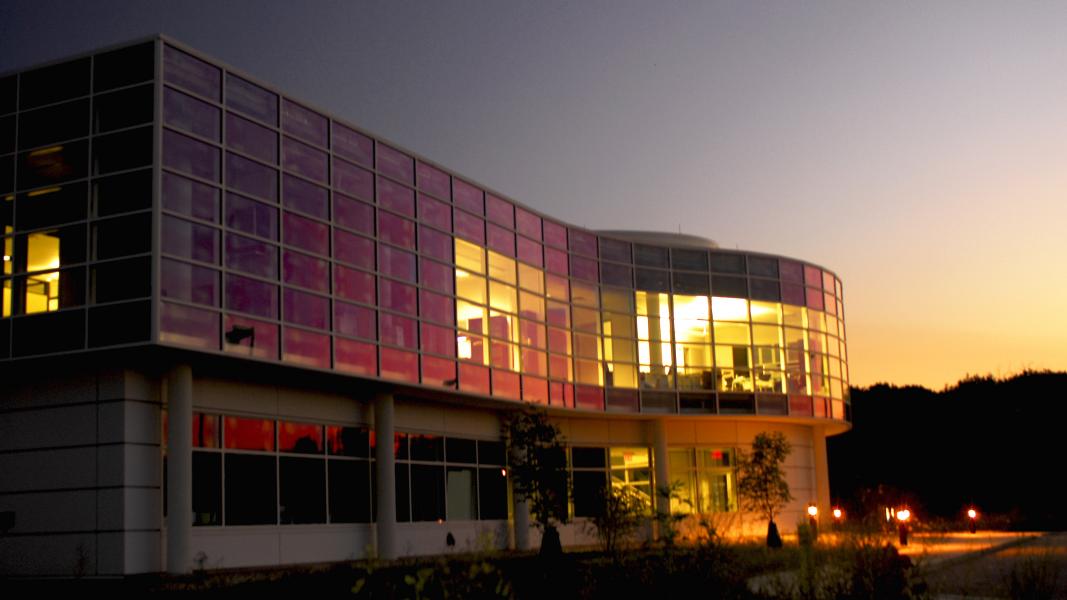
About the Advanced Photon Source

The U. S. Department of Energy Office of Science’s Advanced Photon Source (APS) at Argonne National Laboratory is one of the world’s most productive X-ray light source facilities. The APS provides high-brightness X-ray beams to a diverse community of researchers in materials science, chemistry, condensed matter physics, the life and environmental sciences, and applied research. These X-rays are ideally suited for explorations of materials and biological structures; elemental distribution; chemical, magnetic, electronic states; and a wide range of technologically important engineering systems from batteries to fuel injector sprays, all of which are the foundations of our nation’s economic, technological, and physical well-being. Each year, more than 5,000 researchers use the APS to produce over 2,000 publications detailing impactful discoveries, and solve more vital biological protein structures than users of any other X-ray light source research facility. APS scientists and engineers innovate technology that is at the heart of advancing accelerator and light-source operations. This includes the insertion devices that produce extreme-brightness X-rays prized by researchers, lenses that focus the X-rays down to a few nanometers, instrumentation that maximizes the way the X-rays interact with samples being studied, and software that gathers and manages the massive quantity of data resulting from discovery research at the APS.
ANL is home to Aurora exascale supercomputer.
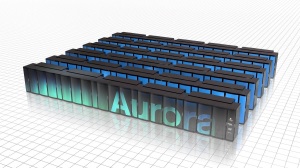
With employees from more than 60 nations, Argonne is managed by UChicago Argonne, LLC for the U.S. Department of Energy’s Office of Science. For more visit www.anl.gov.
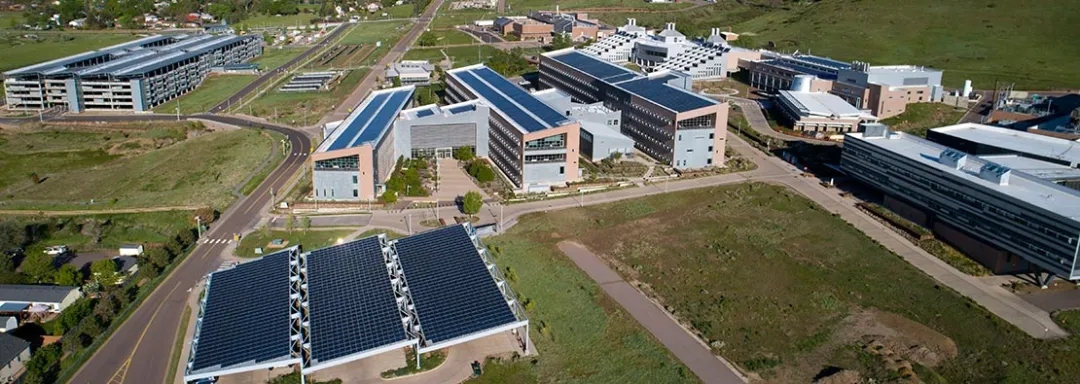
The DOE’s National Renewable Energy Laboratories [NREL] , located in Golden, Colorado, specializes in renewable energy and energy efficiency research and development. NREL is a government-owned, contractor-operated facility, and is funded through the United States Department of Energy. This arrangement allows a private entity to operate the lab on behalf of the federal government. NREL receives funding from Congress to be applied toward research and development projects. NREL also performs research on photovoltaics (PV) under the National Center for Photovoltaics. NREL has a number of PV research capabilities including research and development, testing, and deployment. NREL’s campus houses several facilities dedicated to PV research.
NREL is the U.S. Department of Energy’s primary national laboratory for renewable energy and energy efficiency research and development.
NREL is operated for the Energy Department by the Alliance for Sustainable Energy, LLC.
NREL’s areas of research and development are renewable electricity, energy productivity, energy storage, systems integration, and sustainable transportation.
The United States Department of Energy is a cabinet-level department of the United States Government concerned with the United States’ policies regarding energy and safety in handling nuclear material. Its responsibilities include the nation’s nuclear weapons program; nuclear reactor production for the United States Navy; energy conservation; energy-related research; radioactive waste disposal; and domestic energy production. It also directs research in genomics. the Human Genome Project originated in a DOE initiative. DOE sponsors more research in the physical sciences than any other U.S. federal agency, the majority of which is conducted through its system of National Laboratories. The agency is led by the United States Secretary of Energy.
Facilities
The Department of Energy operates a system of national laboratories and technical facilities for research and development, as follows:
Ames Laboratory
Argonne National Laboratory
Brookhaven National Laboratory
Fermi National Accelerator Laboratory
Idaho National Laboratory
Lawrence Berkeley National Laboratory
Lawrence Livermore National Laboratory
Los Alamos National Laboratory
National Energy Technology Laboratory
National Renewable Energy Laboratory
Oak Ridge National Laboratory
Pacific Northwest National Laboratory
Princeton Plasma Physics Laboratory
Sandia National Laboratories
Savannah River National Laboratory
SLAC National Accelerator Laboratory
Thomas Jefferson National Accelerator Facility
Other major DOE facilities include
Albany Research Center
Bannister Federal Complex
Bettis Atomic Power Laboratory – focuses on the design and development of nuclear power for the U.S. Navy
Kansas City Plant
Knolls Atomic Power Laboratory – operates for Naval Reactors Program Research under the DOE (not a National Laboratory)
National Petroleum Technology Office
Nevada Test Site
New Brunswick Laboratory
Office of River Protection
Pantex
Radiological and Environmental Laboratory
Y-12 National Security Complex
Yucca Mountain nuclear waste repository
Other:
Pahute Mesa Airstrip – Nye County, Nevada, in supporting Nevada National Security Site
